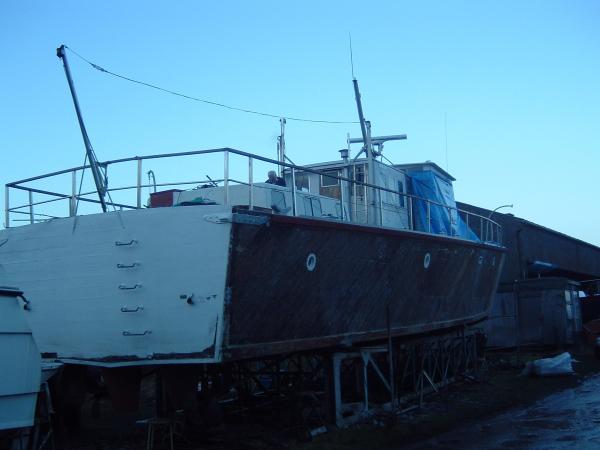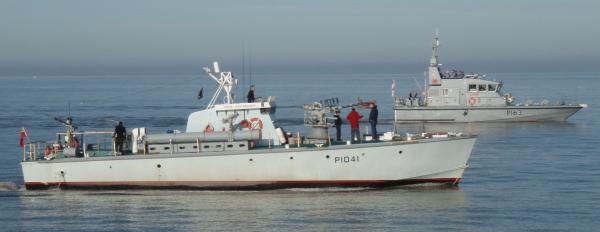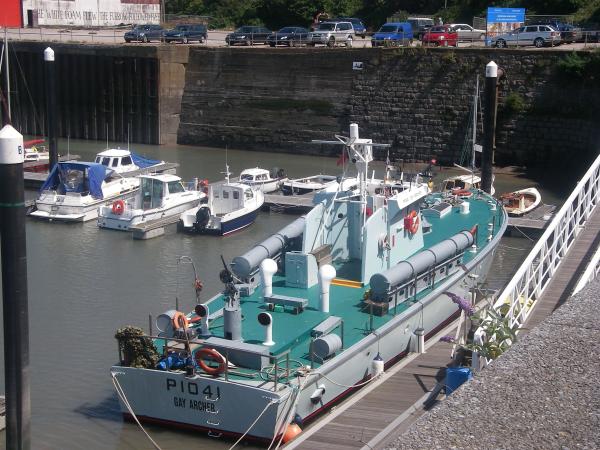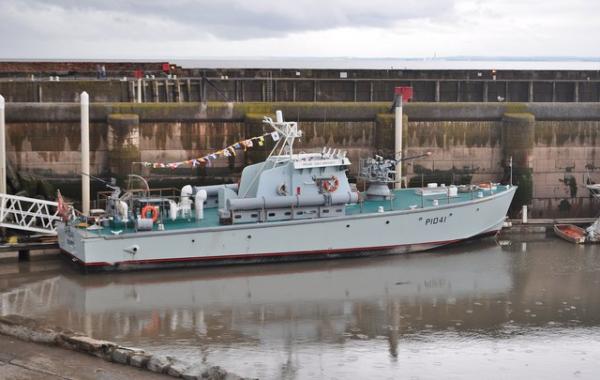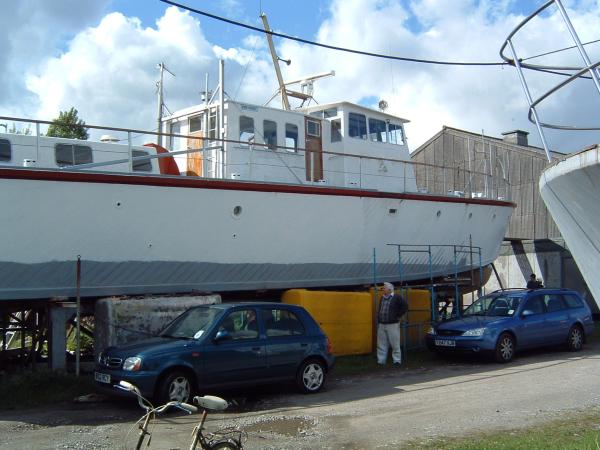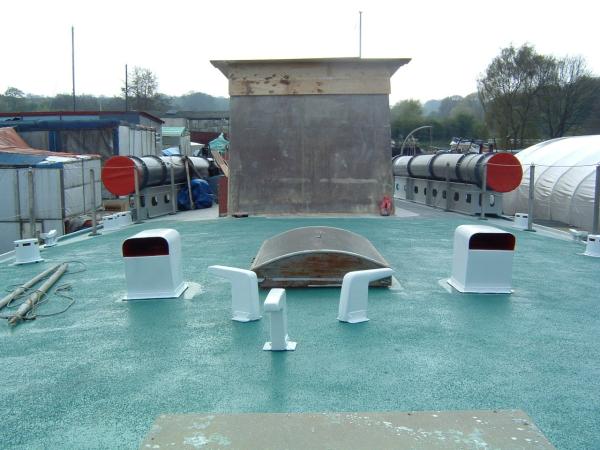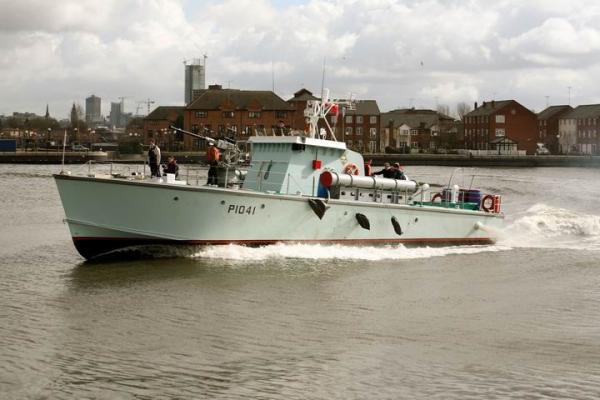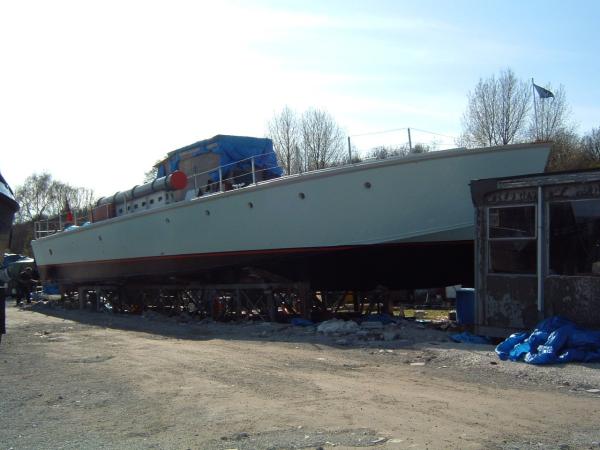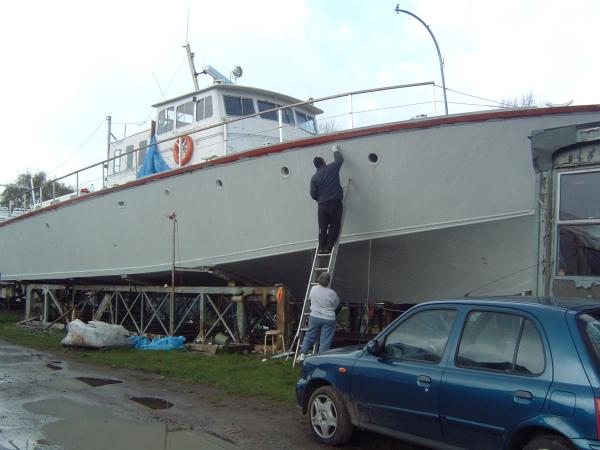

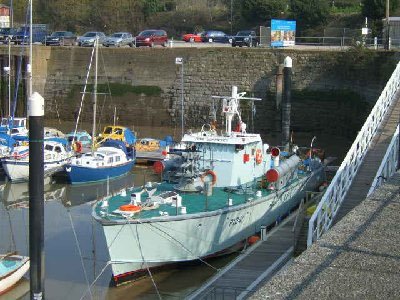
Previous names
- P1041
Details
Construction
Dimensions
History
GAY ARCHER was the first of twelve vessels, known as the Gay class, which were constructed for the Royal Navy in 1952 to bolster the dwindling UK coastal defences. The Gay class hulls were taken from a World War Two specification, but were then upgraded to incorporate 1950s technology.
Built of double diagonal mahogany, they were the last boats to see service with petrol engines. They were powered by three Packard 4M-2500 marine engines, each delivering 1500 bhp with a capacity of forty knots.
GAY ARCHER is now the sole surviving example of the Fast Patrol Boats (FPBs) which were designed to be converted into gunboats or torpedo boats as required, with a standard compliment of thirteen. As a torpedo boat, they carried two 21 inch torpedo tubes with twin oerlikons mounted aft and a Bofor mounted forward. In gunboat mode, a 4.5 inch gun was seated forward with a Bofor aft. They operated from HMS HORNET, Gosport and supported the defence systems of the North Sea approaches. A detachment was also sent to Malta to protect the Suez interest.
It was intended that GAY ARCHER should escort BRITANNIA during the coronation celebrations, but unfortunately in May 1953, she was damaged by fire in Aarhus Harbour. Later, she nearly sank off Southsea Pier, but is now being restored and will serve as a historical tribute to the men who lost their lives defending the shores of Great Britain during the Second World War, or through National Service in post-war years. She is a fine example of the technology available to the UK sea defences at the time she was built.
Only recently, one other surviving member of the Gay Class was hit and sunk by a Guardia Civil tugboat in Spain. She was scrapped and no materials were saved, adding even greater significance to the current restoration of GAY ARCHER.
Key dates
-
1952
Built by Vosper’s of Porchester, Hampshire as a Fast Patrol Boat for the Royal Navy. This class was the first to be specifically designed as multi-task boats. They could carry guns or torpedoes, or a mix of both, or they could be fitted as mine-layers
-
1952-57
She was commissioned into the 2nd FPB Squadron, based at HMS HORNET in Gosport. During a NATO exercise in Scandinavian waters she was nearly lost at Aarhus in Denmark following an explosion in a boat alongside her. She survived a grounding off Portsmouth
-
1957
She was placed in the reserve and after a short life as a Towing Tug she was retired to Troon and scheduled for scrap
-
1958
She was purchased by Frank Lunt who began converting her into a Houseboat, with the bridge and all traces of Naval history removed. She spent nearly 25 years out of the water
-
1958
She was purchased by Frank Lunt who began converting her into a Houseboat, with the bridge and all traces of Naval history removed. She spent nearly 25 years out of the water
-
2004
She was purchased by her present owners
-
2006
Following a 2 yr restoration, she made her way down the Rivers Weaver and Mersey to Watchet in Somerset
Grants
-
January 2013
A Sustainability Award of £500 towards the costs of slipping the vessel was made from the Strategic Development Fund of National Historic Ships UK
-
April-September 2010
A Sustainability Award of £1000 for vessel materials was made from the Strategic Development Fund of National Historic Ships
-
September 2009
A Sustainability Award of £2000 for a new engine was made from the Strategic Development Fund of National Historic Ships
Own this vessel?
If you are the owner of this vessel and would like to provide more details or updated information, please contact info@nationalhistoricships.org.uk

